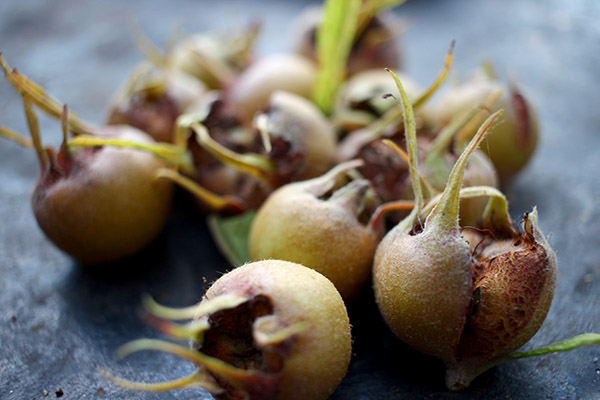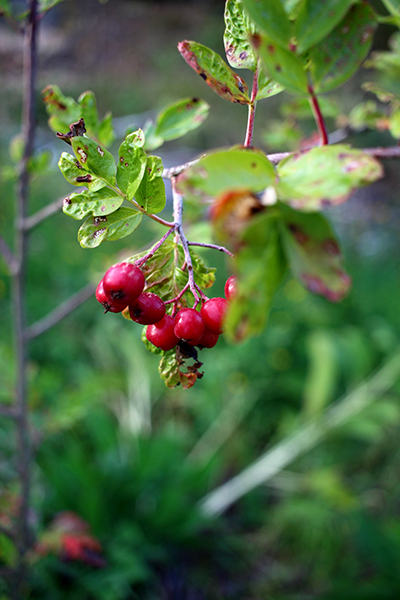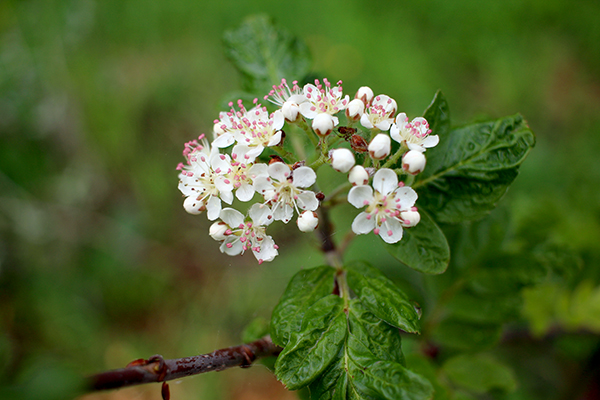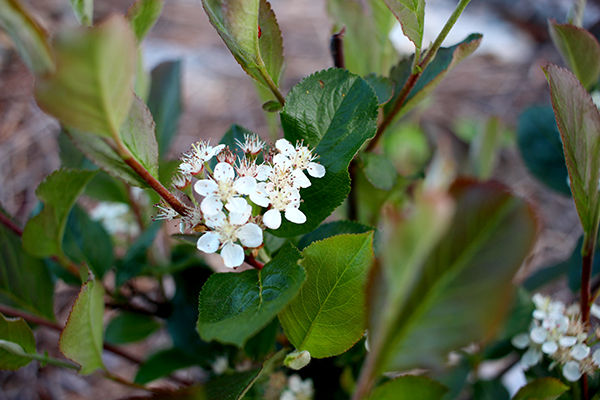I have long been fascinated by the variety of rowan hybrids that sometimes you can encounter in both literature and reality. Sorbus (Sorbus) includes many very hardy members and also easy to hybridize with other species in the subfamily Amygdaloideae which is part of the family Rosaceae (Rosaceae). Särskilt i forna Sovjetunionen har det lagts mycket möda på att korsa fram härdiga hybrider med rönn respektive oxel som skulle möjliggöra fruktodling även i de kallaste delarna av landet.

A prominent character in this work is Ivan Mitjurin (1855-1935) who was self-taught plant breeder and received a lot of attention for their crossover success. He became an important propaganda tool during the Stalin regime and the town where his research was (40 mil south of Moscow) became 1932 renamed to Michurinsk in his honor. Although he was for most of his life dismissed Mendel's discoveries in genetics, he managed quite well to cross out strange hybrids rowan (and hundreds of other hardy fruit- and soft fruits) grown today.
As usual, it is tricky to find your way among these plants with complicated names and here I share with you what I have been able to find.
'Burka' is a hybrid between ash and another hybrid whitebeam and red Ronia with beautiful botanical name Sorbus aucuparia x (Sorbus aria x Aronia arbutifolia). The variety is sweet, dark red berries that ripen in August.
’Titan’ (ibland stavat ’Tiitan’) has an even more diverse genetic backgrounds. It is a hybrid between 'Burka', a äppelart and a päronart and becomes (Sorbus aucuparia x (Sorbus aria x Aronia arbutifolia)) x Malus sp. x Pyrus sp. It is very hardy with dark red berries that look like berries with yellowish flesh, little tart, without bitterness. Matures in mid-August.
'Likornaja' is the same as 'Ivan's Beauty' and is a really hardy hybrid of Sorbus aucuparia and Aronia melanocarpa. It grows into a small tree or large shrub. The fruit ripens in late August and is boiled. We harvested the first fruits of the year and they taste like a mix between chokeberry and rowan, with no frills. Hybrids between Chokeberry and Rowan has got its own epithet named x Sorbaronia, so this variant is called x Sorbaronia 'Likornaja'.

’Desertnaja’ är en sort vi väntar med spänning på att få skörda för första gången. Den är en hybrid mellan ’Likornaja’ och mispel (Mespilus germanica), där den sistnämnde i vanliga fall endast härdig till odlingszon III. ’Desertnaja’ sägs få mycket söta bär som mognar tidigt. Plantan blir endast 1-1,5 m hög och ger skörd som 3-4 årig planta.

'Eliit' is a cross between Rowan and pears, which has come to be called x Sorbopyrus 'Eliit'. The berries are cherry-sized, juicy and red and bears fruit 5-6 years after planting.
'Granatnaja' is the same as 'Ivan's Belle' (not to be confused with 'Ivan's Beauty') and is a cross between Siberian rowan and hawthorn (Crataegus sanguinea). it is 3-5 m high and gives the fruit from 3-4 age. Ivan Mitjurins honor has been given the botanical name x Crataegosorbus miczurnii.
All these varieties usually we multiply by grafting them onto a rootstock of ordinary rowan, that is easy to get through most nurseries. It is also possible to graft them on existing mountain ash, which normally results in a much earlier fruiting.
In addition to these varieties, all of which are attributed to Ivan Mitjurin, I encountered a surprise in my research. The well-known aroniasorterna 'Nero' and 'Viking' also belong to Rowan hybrids by modern genetic analysis has shown. ‘Viking’ anses ha 25% av sina gener från rönnen och resten från vanlig aronia. Båda har förmodligen korsats fram av Ivan Mitjurin och rent smakmässigt hade man kunnat ana att båda har rönngener i sig. Både ’Nero’ och ’Viking’ kan förökas med hjälp av sticklingar, men går lika bara att ympa in på en lämplig grundstam.

Vill man inte föröka dessa sorter själv, och det kan vara svårt att få tag på ympris, finns det allt fler plantskolor who have at least some of those varieties in its range. Particularly in the less favorable growing zones ought to be an interesting alternative to the more heat-intensive fruit trees and bushes.
Sources
Russiapedia. Prominent Russians: Ivan Michurin. http://russiapedia.rt.com/prominent-russians/science-and-technology/ivan-michurin/. Retrieved 2016-10-19.
Crawford, M. Rosaceae family intergeneric hybrids. Agroforesty News. https://www.agroforestry.co.uk/wp-content/uploads/agnews-sample/AGN_sample.pdf, Retrieved 2016-10-19.
Kingsbury, N., Hybrid : the history and science of plant breeding. Chicago: University of Chicago Press, 2009.
Blomqvist, L., the garden berries. Lepplax, Bodövägen 210: [Blomqvist Nursery], 2007.



Jätte intressant, spännande med alla dessa korsningar. Thanks for the info!
Exciting, har du smakat någon som är god att äta färsk? Är bilden på mispel från din egen skörd?
And, det är egna misplar, bilden tog jag förra året då vi fick lite mer än vanligt. De behöver eftermognas ganska länge dock innan de blir goda. Jag hoppas på att kunna återkomma med fler smakerfarenheter nästa år, än så länge har jag bara kunnat skörda från Granatnaja och de är faktiskt helt ok att äta färska också.
Var kan man köpa Päronoxel, Rönn hybrid?
I have tried and succeeded in grafting Viking onto existing small rowan trees. They seemed to do well last summer. Now in the spring, I will continue with a family tree on a transparent blanche partly also with new seed-sown apple varieties. I will also try to graft Burka onto a small rowan tree on the plot. I have tried grafting pears in batches on rowan, but in our zone 7 have they died in the winter even if they made it through the first summer. Yttermalung in Dalarna. If I get to Saskatoon – Amelanchier alnafolia (Martin variety) should I also try to graft these onto rowan. In my garden, I also want to try to grow Pawpaw, which might be able to make it now that the winter temperature has risen to the maximum -23 C in recent years. In the 1970s it went down to closer -40 several winters.